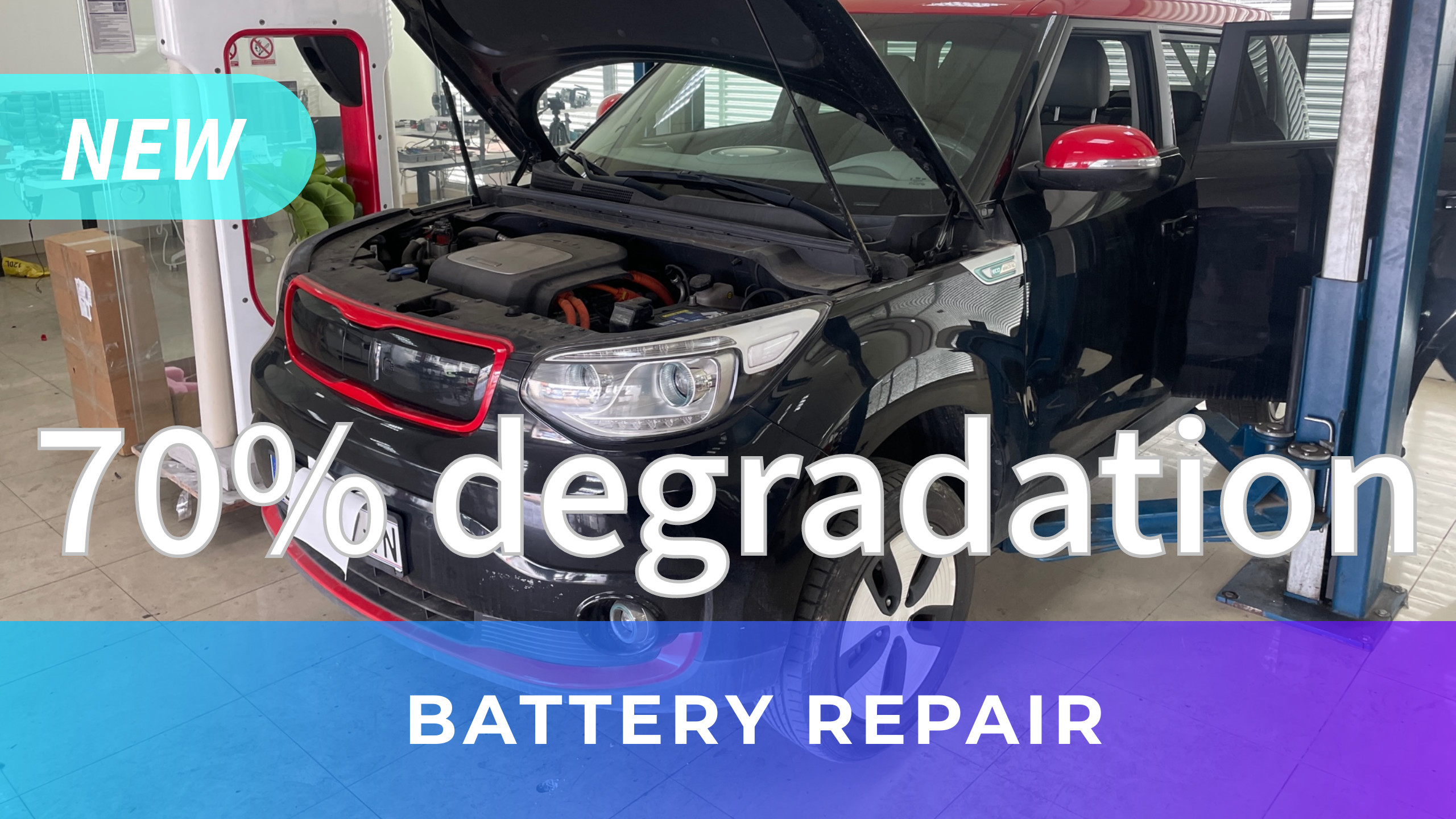
Kia Soul EV – A Case of Battery Degradation and Repairability
The Kia Soul EV has long been one of our favorite EVs, but it has been facing significant battery degradation challenges. When replacement seems like the only option, EV Clinic offers a cost-effective alternative—component-level battery repair through cell replacement.
This particular vehicle, previously driven in the hot climate of Spain, suffered extensive battery cell degradation due to high operating temperatures and inadequate cooling. However, the issue extends beyond just battery wear—the user experience with warranty claims has also become increasingly challenging. In this case, despite the battery warranty still being active, the claim was denied on the grounds of a missing service book—an unusual requirement for an electric vehicle.
This is not an isolated incident; we have seen multiple cases where warranty claims were rejected for reasons that appear unrelated to the battery system itself. In some instances, claims were denied due to missing invoices from unrelated services, creating unnecessary obstacles for owners. While navigating warranty policies can be frustrating, EV Clinic focuses on providing practical solutions where possible.
Component-Level Battery Repair at EV Clinic
To restore this Soul EV’s battery, we performed a multi-phase refurbishment process:
- Initial Cell Isolation & Replacement
- Using a short run-in test, we identified and replaced the most degraded cells.
- Replacement cells were sourced from our network, including LGX cells from a Hyundai Ioniq and nearly new SK Innovation cells from colleagues in France and Slovenia.
- Layered Repair Process
- The first refurbishment improved the vehicle’s range from 50 km to 85 km.
- The second phase, addressing additional degraded groups, further improved the range to 105 km.
- A third phase revealed that groups 1-14 under the passenger side were in poor condition, requiring a full block replacement.
- After completing all stages, the range was restored to 118 km, making the battery functional for at least another 1-2 years.
Battery Health & Final Results
- Before repair: 19 kWh usable capacity (65% SOH, 35% degradation)
- After full refurbishment: 22 kWh usable capacity (75% SOH, 25% degradation)
Future Considerations & Recommendations
Although this repair significantly improved the vehicle’s usability, battery cell availability remains a key challenge. With original cells measuring approximately 10.5 mm, we can only hope that aftermarket alternatives with similar dimensions become available in the near future.
Given the limitations of passive battery cooling in the Kia Soul EV, we are removing this model from our list of recommended EVs. Instead, we suggest the Kia Niro EV, which features an active thermal management system with coolant plates and antifreeze, using the same cell chemistry but with better long-term reliability.
OEM KMAG Kia – 28400 EURO
EV CLINIC – 2000-6000 EURO
Part numbers: 37513-E4000, 37501-E4000, Mobis, SK Innovative,
Errors – Low range, Low SOH,









